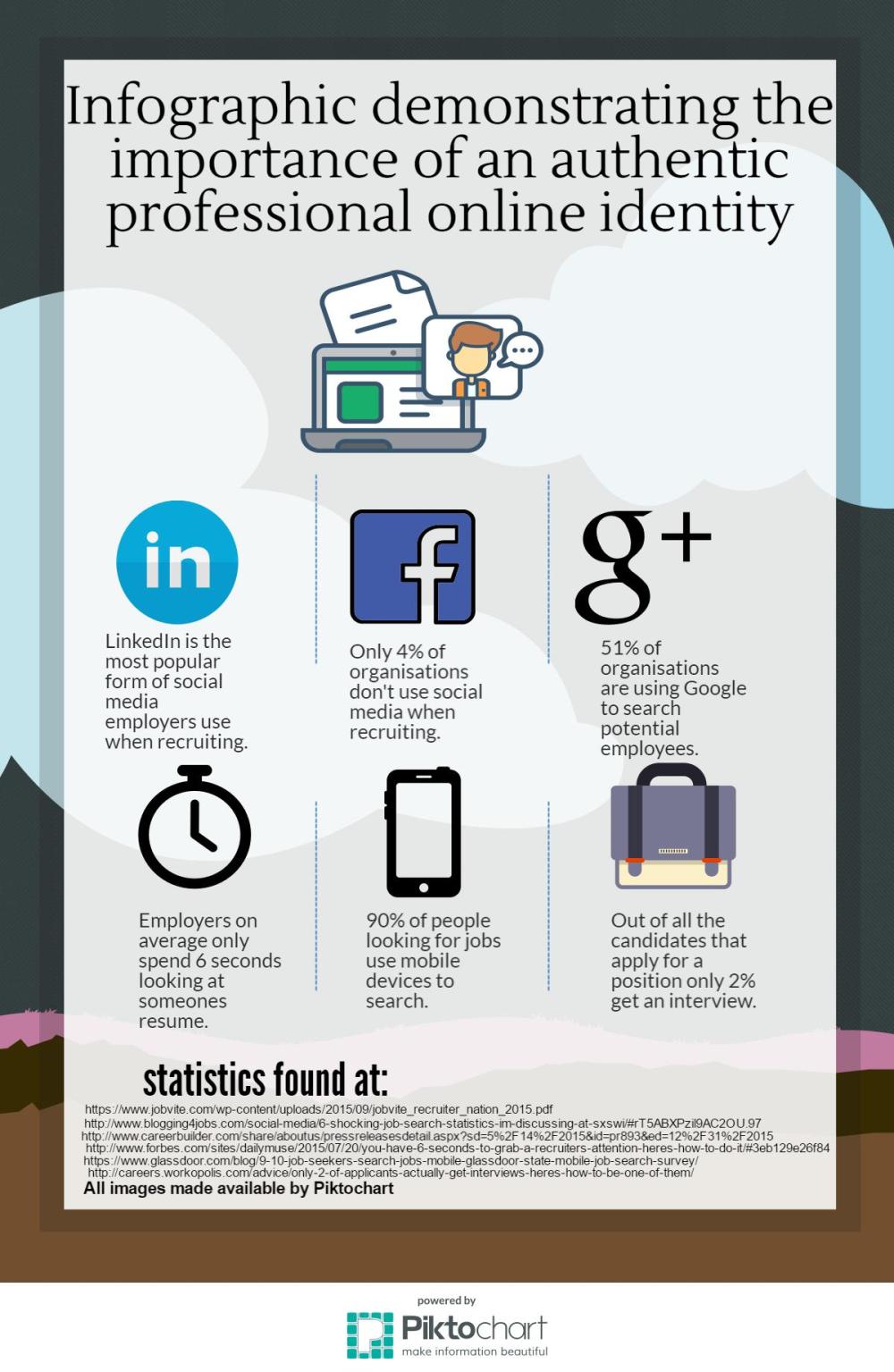 The modern job market is competitive and it’s no longer enough to just send a CV to an employer. With “1.66 million unemployed people available and seeking work” (ONS: 2016) it’s clear that measures need to be taken to make yourself more noticeable.
The modern job market is competitive and it’s no longer enough to just send a CV to an employer. With “1.66 million unemployed people available and seeking work” (ONS: 2016) it’s clear that measures need to be taken to make yourself more noticeable.
Although the majority of internet users have a social media presence most of them use it for personal reasons. This is unlikely to make you a desirable target to employers and could hinder your opportunities. According to a survey in 2013 by On Device Research, it was found that “one in ten young people have been rejected from jobs because of their social media”. By developing your online professional profile you can encourage employers instead of putting them off.
One key way of developing your online profile is by taking advantage of services such as LinkedIn whose aims are to “power your career” as well as allowing you to “connect, find and be found by employers”. To highlight the importance of being involved with LinkedIn the software company JobVite conducted a survey which showed “92% of companies questioned used social media in their recruitment” and “87% of those companies use LinkedIn.”
It may seem obvious but one of the best ways to build your online profile is to become more active in social media through blogging, LinkedIn and twitter. Since beginning this module my online profile has greatly expanded. To demonstrate this I have created a short PowToon on my progress.
When building your online profile it’s important to remain consistent. This can be done by maintaining the same username, pictures and type of posts you make. This will make you more traceable and display your skills efficiently.
One of the most crucial points to make when creating a professional profile is to highlight your skills and potential. It’s important not to over or under inform the reader. In an article by Forbes they highlighted that “most recruiters only spend 6 seconds looking at your resume”. This applies to your online profile also as you want to instantly captivate the recruiter and make them want to find out more. They should then be able to find your other work and links to your social media.
To conclude there are many ways in which you can develop a professional online profile. Simply though the more professionally active you are online the more likely you are to get recognised and given opportunities. There are many websites and apps available to help you create and improve your content.
- Office for National statistics, (Published 19.10.2016), Online report accessed 07/11/2016: http://www.ons.gov.uk/employmentandlabourmarket/peopleinwork/employmentandemployeetypes/bulletins/uklabourmarket/october2016
- OnDeviceResearch, (Published 29.05.2013), Online report accessed 08/11/2016: https://ondeviceresearch.com/blog/facebook-costing-16-34s-jobs-in-tough-economic-climate
- LinkedIn-What is LinkedIn? (2016), Online source accessed 07/11/2016: https://www.linkedin.com/static?key=what_is_linkedin
- JobVite, (Published 22.09.2015), Online article accessed 09/11/2016: https://www.jobvite.com/blog/welcome-to-the-2015-recruiter-nation-formerly-known-as-the-social-recruiting-survey/
- Online Video created through PowToon: https://www.powtoon.com/online-presentation/bUzpdmb5o5r/?mode=movie
- Forbes Magazine, (Published 20.06.2015), Online article accessed 08/11/2016: http://www.forbes.com/sites/dailymuse/2015/07/20/you-have-6-seconds-to-grab-a-recruiters-attention-heres-how-to-do-it/#25aaedb26f84
- Online Infographic created through Piktochart: https://magic.piktochart.com/output/17930598-info-graphic-for-professional-online-identity
Hi Tom,
I’m a big fan of using statistics to reinforce an idea, so to see you do that in your paragraph was a great way to get my attention. The Office of National Statistics is undoubtedly a reliably source – something people don’t always check!
I found that you seemed to avoid expressing an opinion of your own in your blog. So I have to ask which way would you say is the best to create or develop an authentic digital professional profile?
You mention that ‘when building your online profile it’s important to remain consistent. This can be done by maintaining the same username…’ This is something I try and do, I always use the username zacwhu where possible. Do you do the same with tommackenzie20? I wonder how simple this would be for somebody who created their online profile(s) when they were younger….@TomPokemonHunter96 doesn’t have the same level of professionalism.
One slice of constructive criticism would be that you have a large block of text, I find it easier to read large sections of text when they’re separated by some media.
Overall though, really interesting piece.
Zac
LikeLike